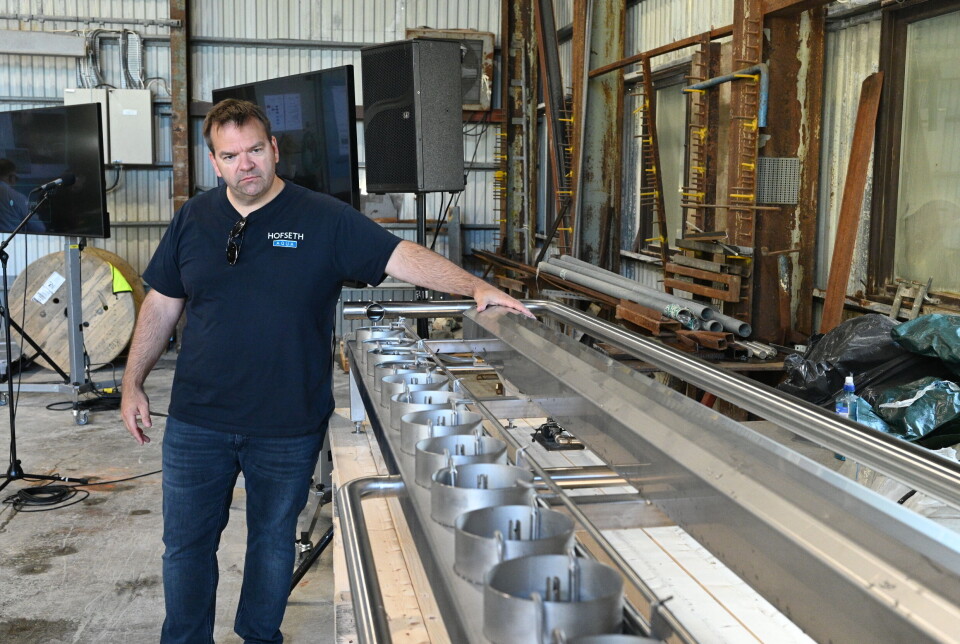
Salmon-farm-in-mine plan clears potential hurdle
Project could produce 100,000 tonnes of salmon per year
A company planning a 100,000-tonnes-per-year on-land salmon farm in a disused olivine mine has taken a step closer to gaining permission for the project.
World Heritage Salmon is aiming for a facility with a maximum total biomass (MTB) of 54,600 tonnes at Raudbergvika on the shore of the Sunnylvsfjord in Fjord municipality, More and Romsdal county, Norway.
Norway’s Directorate of Fisheries has been consulted about the project by More and Romsdal county planners and has concluded that it will not have any negative effect on fishing interests in the sea area outside the site.
400-metre halls
World Heritage Salmon is majority-owned by Roger Hofseth, who owns net pen salmon farmer and seafood processor Hofseth Aqua and bought the olivine mine after it closed down in 2018.
He intends to accommodate the salmon tanks in a number of 400-metre-long halls that are planned to be excavated over a ten-year period. The site has access to cheap hydroelectricity and constantly refreshed water from the fjord.
Although the mine had been closed, World Heritage Salmon has calculated that there are 10 million tonnes of olivine still in the ground, and that olivine removed when the halls are excavated could be sold to offset some of the construction cost. Olivine is mainly used as a slag former in the production of pig iron, where it greatly contributes to a reduction in CO2 emissions when used instead of dolomite, which is also used for the purpose.
Desalinated water
As well as producing harvest-sized fish, World Heritage Salmon wants to build a recirculating aquaculture system (RAS) smolt facility to produce fish up to 70 grams.
These will then be transferred to a post smolt facility inside the mountain in halls that will produce 300-gram post-smolts. The food fish production will also be located inside the mountain and will produce fish up to around 5-6 kilos in a combined flow-through and reuse facility.
All freshwater needs will be met through the desalination of seawater, which is collected from a depth of 40 and 80 metres respectively in the Sunnylvsfjord. Discharge of treated wastewater is planned to take place at a depth of approximately 20 metres in the Sunnylvsfjord, around two kilometres north of the planned seawater intake. All wastewater will be filtered and treated.
Clean wastewater
The aim is to clean the water as quickly as possible after it has been used, i.e., as close to the fish tank as possible. It is easier than doing it further away when the sludge has dissolved more into the water.

The sludge is intended for biogas production.
Hofseth claims the facility is the cleanest he knows of that is planned.
“And we don’t want to piss in our own bath water. We produce fish out in the fjord as well, so if there is someone who is not interested in getting something [unwanted] out in the fjord, then it is us,” he told Fish Farming Expert’s Norwegian sister site, Kyst.no / LandbasedAQ.
The site of the proposed fish farm is within an area regulated for mass extraction/mining, and not aquaculture, but an application for rezoning the area is under consideration, and Fjord municipality has given consent for the aquaculture application to be processed in parallel with the zoning plan process.
Fjord municipality has also recently reported to Møre og Romsdal county that it has no objections, and that World Heritage Salmon’s application attracted no comments when it was advertised on its website and in newspapers.
Read more on the project on LandbasedAQ (in Norwegian).






















































